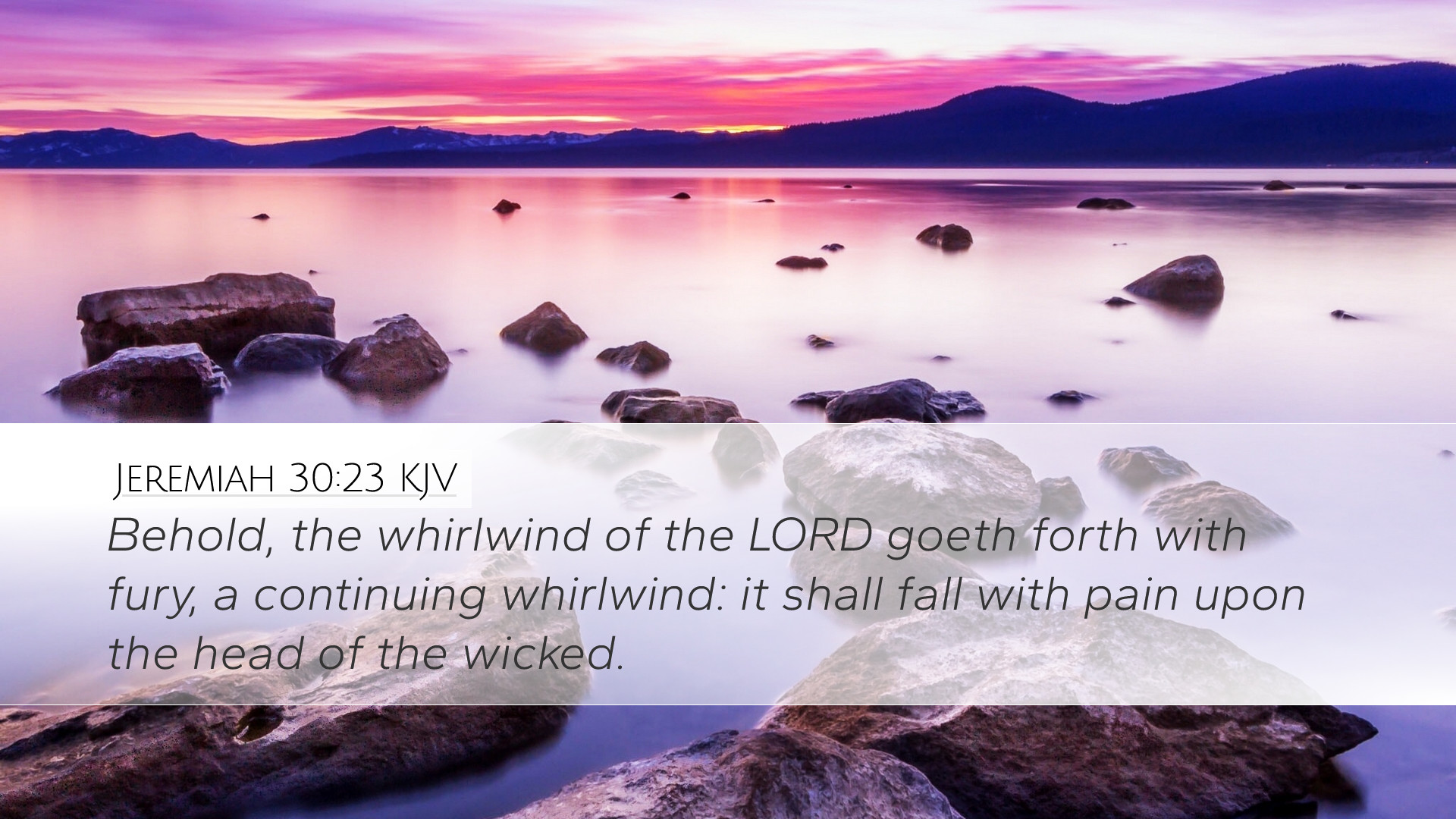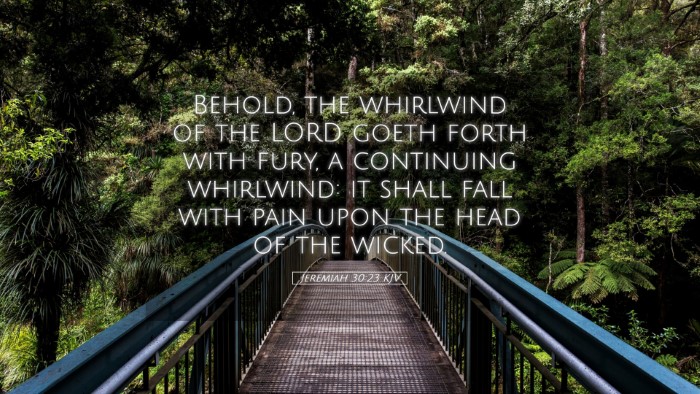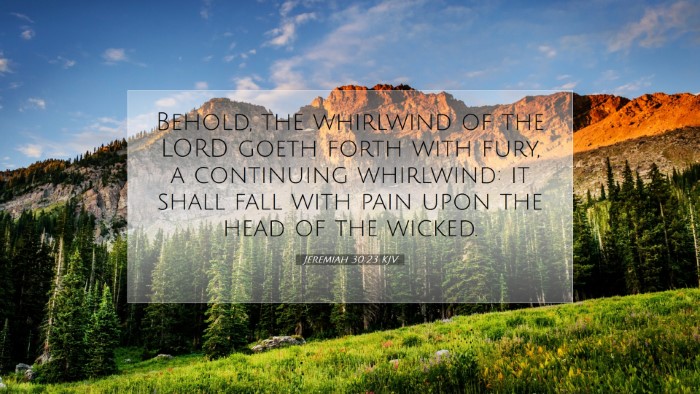Commentary on Jeremiah 30:23
Verse: "Behold, the whirlwind of the Lord goeth forth with fury, a continuing whirlwind: it shall fall with pain upon the head of the wicked."
Introduction
The verse Jeremiah 30:23 serves as a vivid portrayal of the divine judgment that the Lord executes upon the wicked. It encapsulates the essence of God’s wrath, where the imagery of a whirlwind conveys both power and tumult. This commentary seeks to explore the multiple facets of this verse through the lens of various public domain commentaries, particularly those of Matthew Henry, Albert Barnes, and Adam Clarke.
The Nature of Divine Wrath
Commentators emphasize that the whirlwind symbolizes God's anger that is not just sudden but perpetuating. Matthew Henry articulates this by stating that the whirlwind reflects a fury that is both unavoidable and destructive, signifying the seriousness of divine displeasure against sin.
Albert Barnes echoes these sentiments by suggesting that to depict God's judgment as a whirlwind indicates a rapid and overwhelming force that will leave no stone unturned in its path. The continuous nature of the whirlwind suggests that this judgment is consistent and unyielding. It is not merely a fleeting moment of anger but a sustained initiative of Almighty God against wickedness.
The Theological Implications
This verse challenges readers to consider the cosmic justice of God, as noted by Adam Clarke. He posits that divine judgment serves a larger purpose, not only in punishing evil but also in restoring order and righteousness in the world. The pain that shall "fall upon the head of the wicked" is a reminder that sin has consequences, and that God's justice cannot be resisted or hidden.
A Call to Awareness and Repentance
The imagery prompts an urgent call for self-examination and contrition among believers. Matthew Henry encourages the faithful to heed this warning, understanding that God's fury is directed towards the unrepentant. There is an exhortation for the people of God to engage in repentance and seek refuge in divine mercy to avoid such a fate.
Comparative Textual Analysis
In comparing this text with other prophetic literature, Albert Barnes notes that the recurring themes of judgment and mercy highlight the dual nature of God's character. While wrath is depicted here, it is closely associated with the promise of restoration found in other sections of Jeremiah. Such contrasts are essential for theological reflection, allowing pastors and scholars to explore the complexities of divine character revealed in scripture.
Imagery and Symbolism
Henry draws upon the powerful symbolism of the whirlwind, which is often used throughout scripture to represent divine intervention. The whirlwind signifies not only destruction but also the uncontrollable nature of God's plans. Even the wicked could not predict when or how God's judgment would manifest. This serves to remind readers of the uncertainty inherent in their sinful condition.
Moreover, the idea of a "continuing whirlwind" indicates that the consequences of wickedness are far-reaching and persistent, highlighting the persistent effects of sin that linger in the lives of individuals and communities.
Application for Today’s Believers
This verse holds significant relevance for contemporary audiences, particularly in how it frames the discourse around divine justice and human morality. Adam Clarke emphasizes the necessity of understanding that divine retribution cannot be avoided. In applying this scripture today, pastors and theologians must challenge congregations to live lives reflective of God's holiness, avoiding complacency in the face of sin.
- Reflection and Study: Encourages careful study of one’s own conduct in light of God’s holiness.
- Preaching on Justice: A call to integrate messages of divine justice and mercy in teaching.
- Community Awareness: A reminder for churches to engage the community about the realities of sin and consequences.
Conclusion
The examination of Jeremiah 30:23 through the insights of the noted commentators provides a rich theological understanding of God’s judgment against wickedness. It is a stern reminder of the realities of divine wrath, but also an impetus for the faithful to turn towards repentance and grace. This nuanced interpretation serves both pastors and scholars as they navigate the complexities of God’s character in their teachings and studies.


